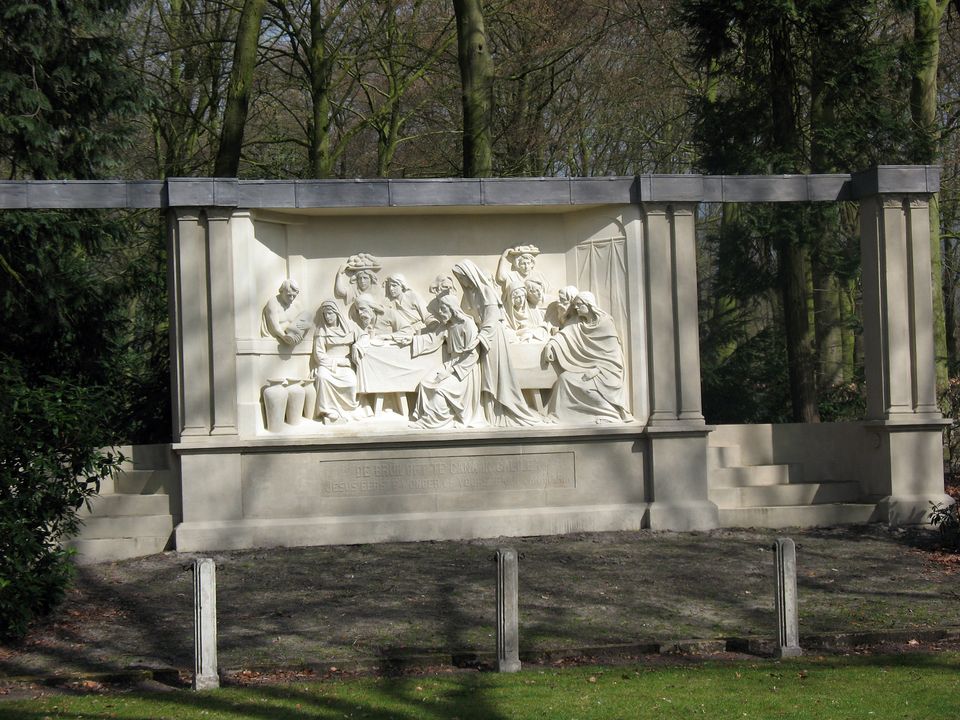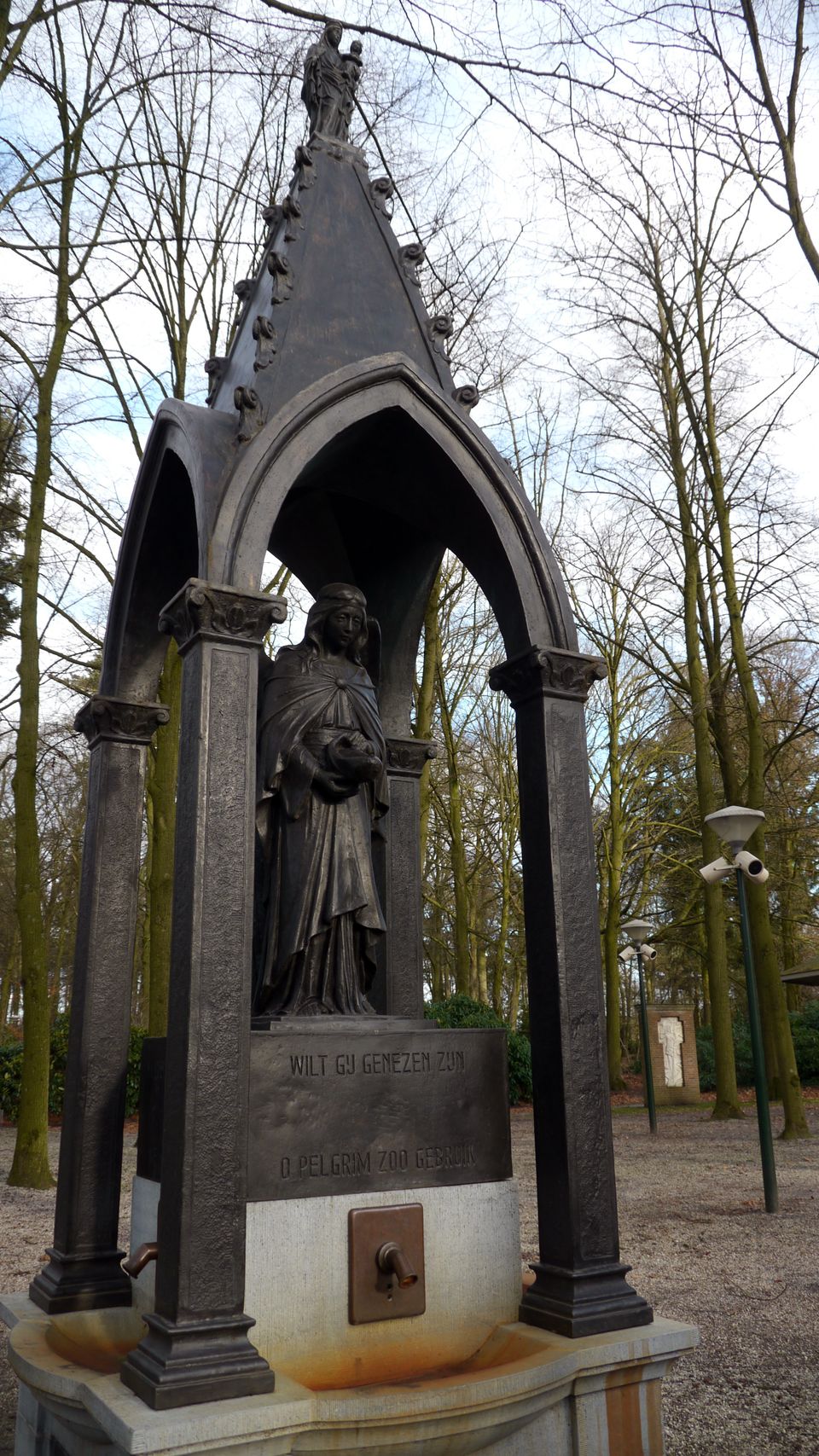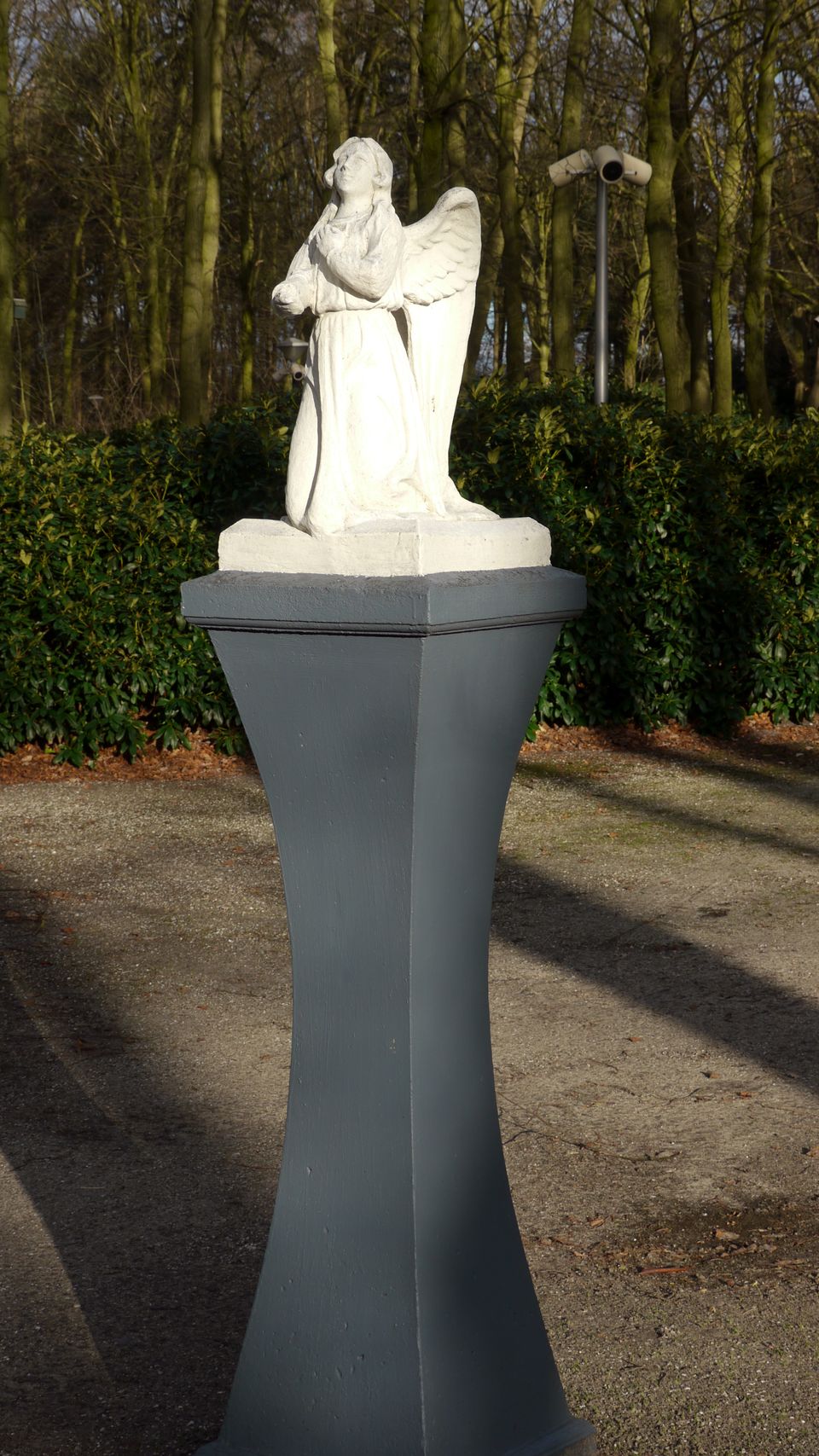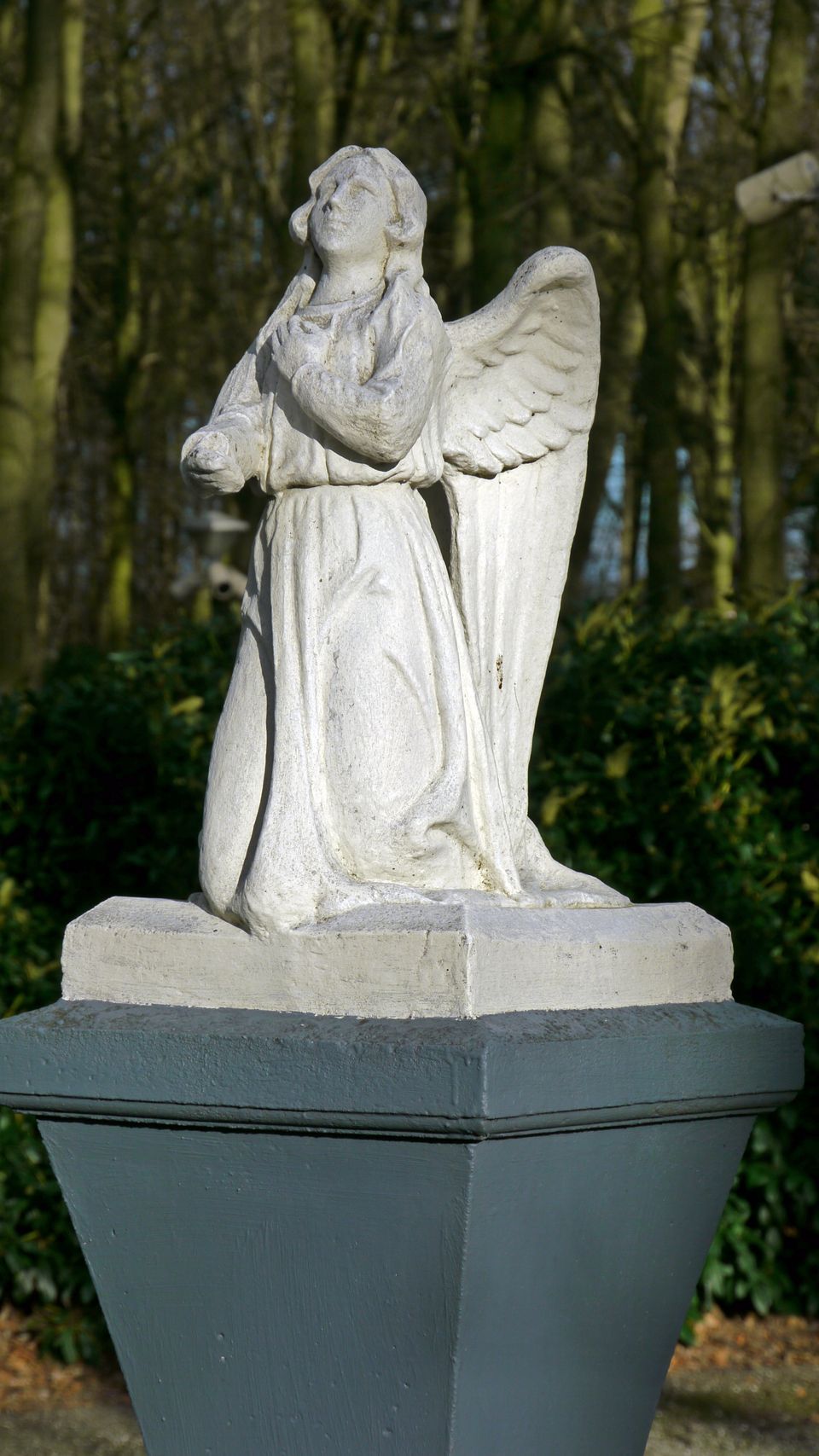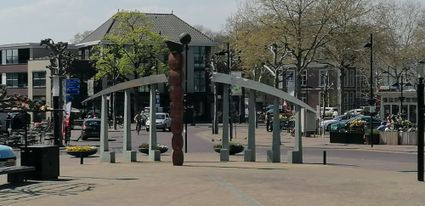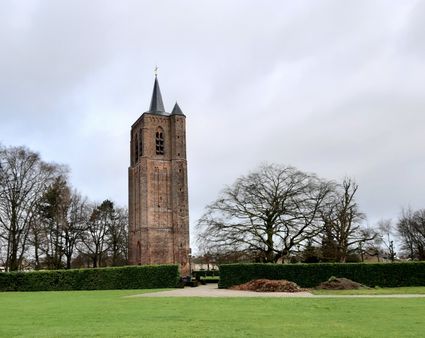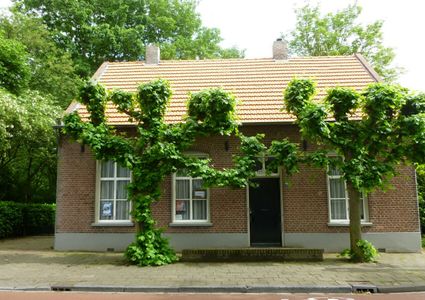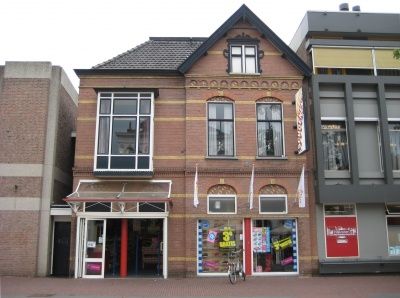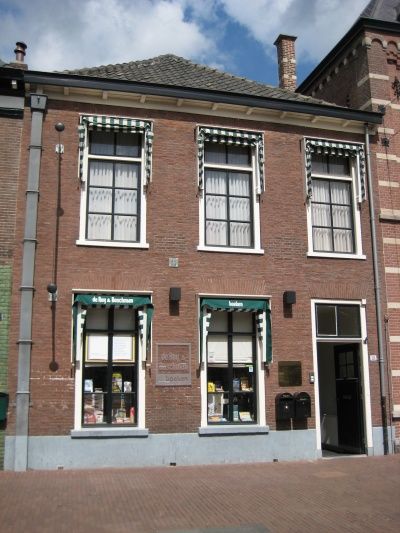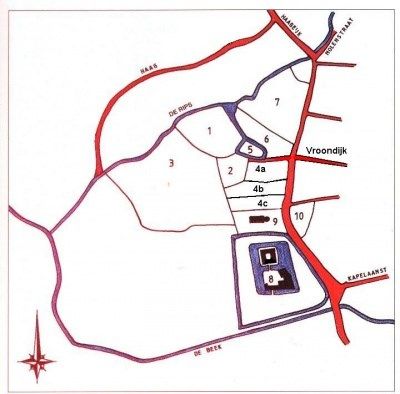Processiepark | Handel
Neem contact op
On November 2, 1904, Rector Johannes van de Laarschot wrote to his bishop that he had gotten the idea to build a processional road with orator…
On November 2, 1904, Rector Johannes van de Laarschot wrote to his bishop that he had gotten the idea to build a processional road with oratory chapels behind the church. It would be very conducive to pilgrimage. After all, Handel is the oldest Marian pilgrimage site in Brabant. Until then, the chancel of the church directly bordered the fields and meadows that belonged mainly to the farmstead "het Zwart Cruijs" and were the property of the Handel chapel. In the midst of it already stood the legendary Wonderbare Putje, of which legend has it that Mary spontaneously let it spring up when drought plagued one during the chapel construction. The Well is located just at the height of the "Disturbance Trade West," a soil disturbance that pushes water to the surface in several places, the so-called "pointing phenomena." The "Wonderbare Putje" is already mentioned in 1594 when, between Easter and Pentecost, rector Albertus Strijbos verneut and repaired the "fountain entirely of masonry, chest and pipe, costing a total of 8 gl.". It must have been of respectable age by then.
Construction of processional road and chapels of the Rosary
Rector Van de Laarschot received the necessary permission from his superiors, provided it was not at the expense of the church treasury. Van de Laarschot, a native of Veghel, had already succeeded in having the chapel in Handel completely refurbished through donations. In the period 1904 - 1906 the rector began to raise the necessary funds. Meanwhile, during the same period, the shearwoods were cleared and the processional road (dirt road) was paved. Construction of the Rosary chapels could begin in 1906. In the four following years, all fifteen chapels of the Rosary were erected and decorated with statues about 70 cm high, made by the workshop of J. Niclaus Bouckaert in Ghent. On Johannes van de Laarschot's twenty-fifth anniversary as rector of Handel, in 1908, the Benediction Chapel was built as a gift, exactly halfway between the processional road and the series of Rosary chapels. In this Benediction Chapel we find the effigy of a seated Madonna and Child and the kneeling Dominic. It is carved from brouvilliere stone.
